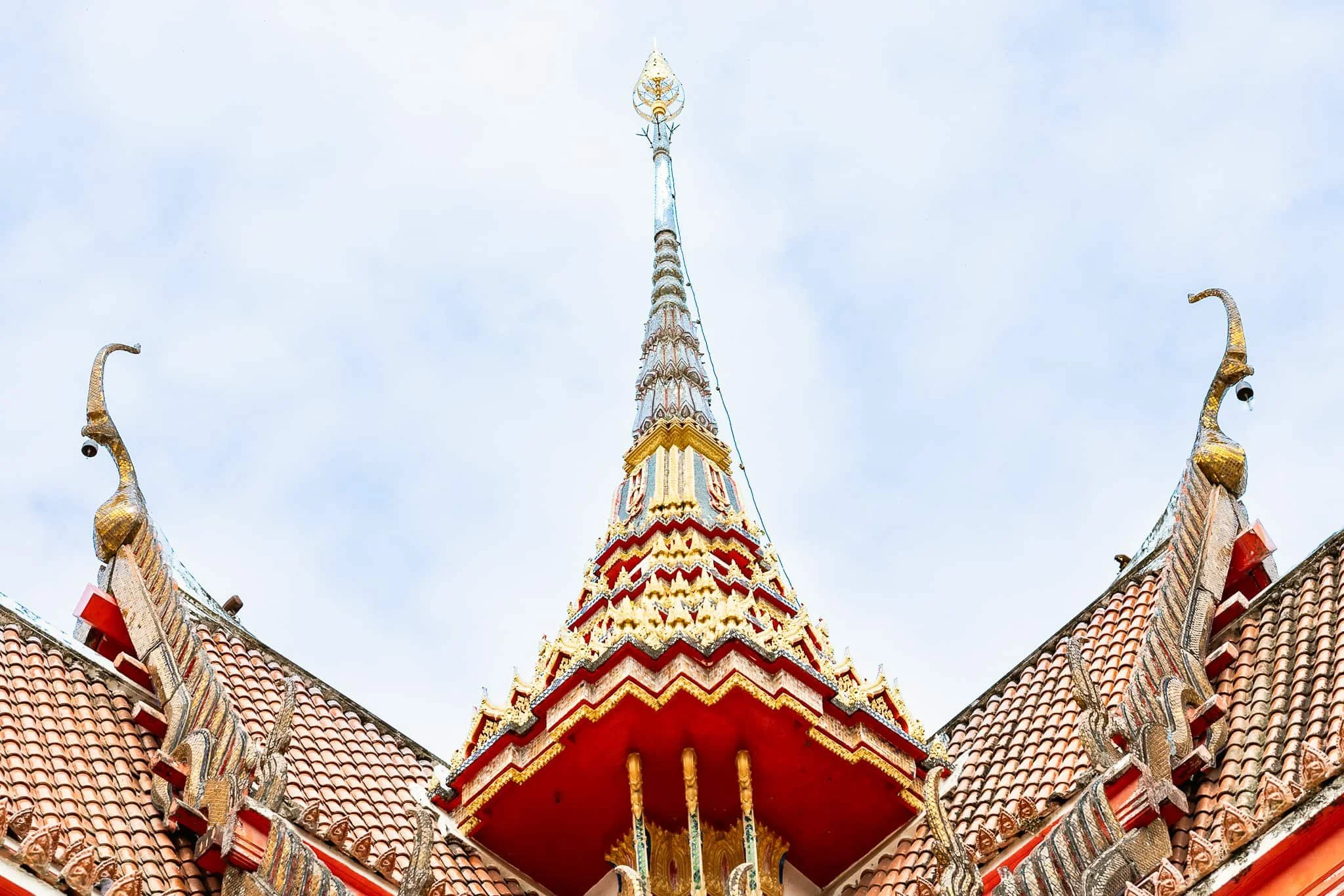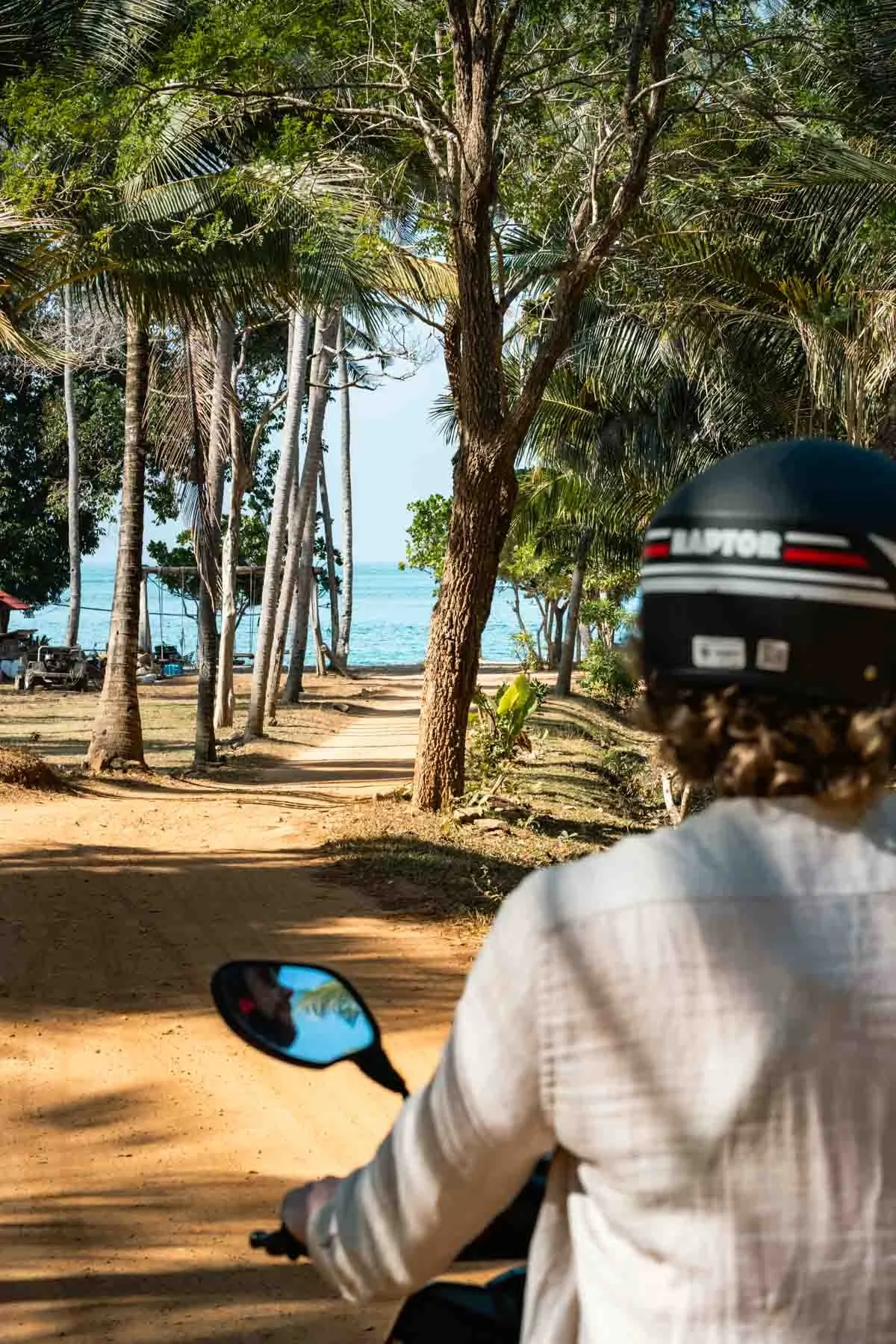Pack Like a Pro: Your Ultimate Thailand Packing Guide
Thailand is hot, humid, and full of surprises, so packing light is key. But with the right gear, you’ll be ready for both the heat and unexpected adventures. This packing list covers exactly what to bring—and what to leave behind.Suitcase or Backpack?
Thailand is NOT an accessible country, so traveling with a backpack is convenient. Thailand is so diverse and if you will be hoping from cities to islands a backpack will be your best friend. From busy cities to remote beaches and jungle treks, it will be easier to carry through uneven paths, non-existing sidewalks or broken ones, put in a boat or fit it in a tuk-tuk.
We recommend packing light— the less you carry the easier it will be for you to hop on and off, use public transport, taxis, or walk on the streets.
We typically organize our clothes in packing cubes for quick access: one cube for bottoms, one for tops, one for outdoor clothing, and so on. We also pack our shoes in fabric reusable shoe bags. It ultimately depends on your packing style.
READ | Our Worldtrip Packing List
BUY | Osprey Aether 55 (55L)
Our Daypack Items
We have a list of the daypack items we rely on every day, regardless of the country. You can check our Amazon Storefront list below.
For Thailand, a helpful traveler’s tip is to carry toilet paper, hand sanitizer and liquid soap in a travel-sized refillable bottle, as public restrooms may not have these supplies. Thailand hygiene standard is to use the famous bum gun, so they do not rely on toilet paper. You probably will not find toilet paper or soap in most public restrooms.
Mosquito repellent and sunscreen are also a must. You can buy the mosquito repellent cheaper in Thailand. However, sunscreen can be very expensive.
READ | Everyday Essentials: The Must-Have Items in our Daypack
BUY | Items in Our Bag: Daily Travel Edition on Amazon
Clothing
Thailand’s heat and humidity make lightweight, breathable fabrics like linen or cotton your best choice. Avoid heavy or synthetic materials that trap heat. A light rain jacket or poncho can be useful, especially during the rainy season, and quick-dry clothing helps you stay comfortable.
For footwear, sandals are great, but be cautious—many sidewalks and paths are in poor condition, so watch your step. Flip-flops are fine if you're confident in them, but they offer little support, and it's easy to twist an ankle. If you plan on walking a lot, comfortable sneakers with good grip are a better option.
In the evenings, long-sleeved shirts and lightweight pants not only keep you comfortable but also help protect against mosquito bites. And while beachwear is totally fine at the beach, in smaller towns it’s appreciated if you wear a cover-up when walking to and from the beach.
When visiting temples, palaces, and other cultural or religious sites in Thailand, it’s important to dress respectfully by covering your shoulders and knees, as you won’t be allowed to enter otherwise. While most people dress conservatively, it’s common to see locals in shorts and skirts, but revealing cleavage is not the norm. We encourage you to avoid wearing bikinis, going shirtless, or wearing see-through dresses outside the beach! This is not part of Thai culture, and respectful behavior is always appreciated.
We’ve added all the items from our packing list to our Amazon storefront so you can easily find the products we love, use, and have personally tested during our travels.
To make things even easier, we also created a special section with modest clothing picks, for shopping or just outfit inspiration, based on what worked for us in Thailand.
BUY | Find modest outfit ideas on our Amazon Storefront
BUY | Shop everything you found on this list on our Amazon Storefront
✈︎ Planning a trip to Thailand? Don’t miss our Thailand Travel Essentials for practical tips, highlight destinations, travel costs, and sample itineraries.
Menstruators Essentials for Thailand
For menstrual cup users it is easy to clean your cup on the go. Most of the toilets have a bum gun and/or a faucet for the bucket and mug. You might not always find hand soap, so bring a small refillable bottle along.
If sustainability and comfort is important for you, consider bringing period underwear. It is very comfortable and you do not have to worry about public toilets.
You will be able to find pads without any issue, but tampons are a rare find.
READ | Traveling on Your Period? Tips & Products to Stay Comfortable
Sustainable Recommendations
For your Daypack
We always carry our reusable water bottles since we can always refill it in most countries, including Thailand. We advice you to buy one water gallon at a convenience store and search for water dispensers machine in your area. You can get 1 liter for ฿1 with these machines. If you will be staying for a longer period, ask your hosts where you can buy a 20L water dispenser. This normally cost ฿17. We do this to avoid buying a million plastic bottles of water.
We always carry a compact & foldable reusable bag for groceries or beach trips, and it’s super helpful if we need to lighten our luggage at the airport, allowing us to shift items into our carry-on. For hikes or visits to street food markets, we recommend investing in collapsible food containers, along with reusable cutlery and metal straws.
Additionally, we keep a travel-sized reusable bottle filled with sunscreen in our daypack for easy access throughout the day. Find out more about sustainable travel essentials in our guide below.
READ | Our sustainable travel must-haves for every trip
BUY | Travel sustainable items that we love on Amazon
Planning your next holiday?
When you make a purchase through our links, you support us without any extra cost to you.
Your support means the world to us!
FIND HOTELS | Booking.com
FIND A RENTAL CAR | Rentalcars.com
GET TRAVEL INSURANCE | HeyMondo (get 5% off)
BOOK TOURS & ATTRACTIONS | GetYourGuide
BOOK A BUS / TRAIN / TRANSFER | 12Go
a
Laundry
We recommend packing light, as doing laundry in Thailand is quick and easy. Laundromats are widely available, often just around the corner, and your clothes will be ready in about an hour. Be prepared, bring a reusable travel-sized bottle with your favorite detergent, as you can not buy it at laundromats. Another option is to pay at your accommodations offer laundry services, they normally charge per piece or weight.
Don’t forget to pack a laundry mesh bag for both sustainability and to protect your delicates while traveling Thailand.
READ | Laundry on the go - the best tips based on our experience.
BUY | Our travel laundry favorite items from Amazon
Health & Safety
Safety
Thailand is a safe country, with low crime rates. Pick-pocketing might happen, but it's rare. We advice you to stay aware of your surroundings, especially in crowded areas.
Learn more about how we prioritize safety while traveling here.
Emergency? No problem. We always get an Saily eSIM and kept our phones ready to call or navigate. When you're always online, you feel more secure knowing help, maps, or communication are just a tap away.
Newsletter
Turn dreams into plans and get a monthly dose of wanderlust with our tips, guides & travel stories.
Health
Vaccinations
No specific vaccinations are required for entry into Thailand unless you're traveling from a country with a risk of yellow fever.
We advice you to consult with a healthcare provider before traveling.
Recommended Vaccinations for Thailand:
Routine Vaccinations: Make sure you’re up to date on the standard vaccinations, including:
MMR (Measles, Mumps, Rubella)
Diphtheria, Tetanus, Pertussis (DTaP)
Polio
Influenza
Varicella (Chickenpox)
Hepatitis B: It is recommended for travelers who may have exposure to blood or bodily fluids, such as those planning on staying long-term, seeking medical treatment, or engaging in high-risk activities.
Typhoid: If you plan to visit more rural areas or eat food from street vendors, the typhoid vaccine is recommended as it protects against foodborne bacteria that can cause infection.
Japanese Encephalitis: This is recommended for travelers who will be spending significant time outdoors in rural areas or near farms, particularly during the warmer months when mosquitoes are more prevalent.
Rabies: Rabies is a major concern in Thailand, it’s recommended for travelers who may have close contact with stray dogs and monkeys.
Travel Insurance
Travel health insurance is essential for any trip, covering unexpected medical expenses such as doctor visits, hospital stays, prescriptions, and emergency treatments. It ensures you receive the care you need while protecting you from high medical costs. This is especially important when traveling to unfamiliar destinations or regions with limited healthcare access, where quality medical treatment may not be readily available. To help you find the best coverage for your trip, we’ve put together a guide—here’s what to look for.
READ | Travel Insurance Explained: Stay Covered Abroad
Payment Methods
Thailand is can be very credit card-friendly country and most shops accept card payments without charging transaction fees. However, it’s still good to carry some cash, especially for small eateries and night markets. ATMs are widely available, especially in convenience stores, and most will charge withdrawal fees.













